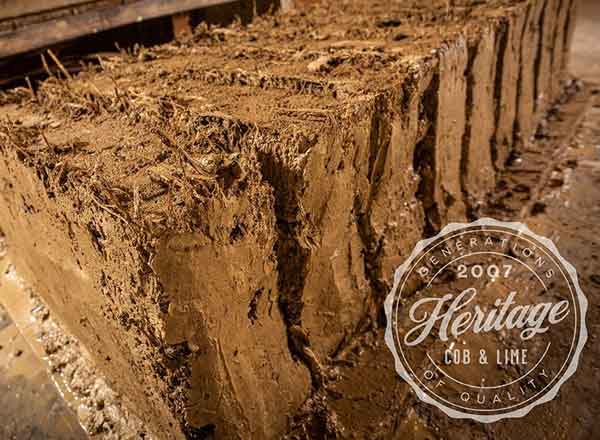Fire Resistance of Cob Blocks.
One significant aspect of our cob blocks that is often praised is their inherent fire resistance. This quality stems from the natural materials used in cob construction, such as clay, sand, straw, and water. The mixture of these elements creates a solid and dense structure that is less prone to catching fire compared to conventional building materials. As a result, cob block houses have the potential to offer a higher level of fire safety to occupants and neighbouring properties.
Furthermore, the thick walls typically found in cob block houses provide an added layer of protection against fire spreading. The slow rate at which cob blocks burn can offer valuable time for occupants to evacuate safely or for firefighters to intervene and control the situation. This feature not only enhances the safety of the residents but also contributes to the overall resilience of the building in the face of fire incidents.
Safety Features in Construction
In construction using cob blocks, safety features are imperative to ensure the structural integrity of the building. Incorporating proper reinforcement techniques and using high-quality materials are essential for withstanding various environmental factors over time. Additionally, the careful selection of additives like straw or fibres enhances the overall strength of the cob blocks, making the construction more resilient to potential hazards.
Moreover, installing adequate fire protection measures is crucial when constructing with cob blocks. Due to their composition, cob blocks have a natural resistance to fire, but additional precautions such as fire-retardant coatings or strategic placement of fire barriers can further enhance the safety aspect of the structure. Ensuring that the construction complies with relevant safety regulations and standards is paramount in creating a secure environment for occupants and safeguarding the property against unforeseen incidents.
Maintenance Requirements for Cob Block Houses
Maintaining cob block houses is crucial to ensure their longevity and structural integrity. Regular upkeep involves checking for any signs of wear and tear, such as cracks or erosion, on the cob walls. It is recommended to inspect the exterior and interior walls periodically, especially after extreme weather conditions, and repair any damages promptly using a mixture of cob material to ensure the walls remain strong and stable. Additionally, applying a breathable sealant on the exterior surface can help protect the walls from moisture infiltration and weathering.
In terms of maintaining the roof of cob block houses, it is essential to keep it well maintained to prevent leakage and structural issues. Regularly inspecting the roof for any missing or damaged thatch, if applicable, and replacing it as needed is crucial. It is also advisable to clear any debris, such as leaves or branches, that may accumulate on the roof, as they can trap moisture and lead to deterioration of the structure over time. By following these maintenance guidelines, cob block houses can remain in optimal condition for years to come.
Care and Upkeep for Longevity
Cob block houses require regular care and maintenance to ensure their longevity. One crucial aspect of upkeep is to regularly check the exterior walls for any signs of erosion or damage caused by weather conditions. Repairs should be promptly carried out to prevent further deterioration. Additionally, applying a fresh coat of natural plaster on the walls every few years helps to protect the cob blocks from moisture and prolong their lifespan.
Ensuring good drainage around the foundation of a cob house is essential for its maintenance. Proper drainage helps to prevent water from seeping into the walls, which can weaken the cob blocks over time. Regularly clearing gutters and ensuring that downspouts direct water away from the house can significantly contribute to the longevity of a cob block structure. Furthermore, periodically inspecting the roof for leaks and repairing them promptly is crucial in maintaining the integrity of the entire building.
Soundproofing Qualities of Cob Blocks
When considering the soundproofing qualities of cob blocks, it is important to note that cob houses inherently offer a level of noise reduction due to the thickness of the walls. The dense and solid nature of cob construction naturally absorbs sound vibrations, helping to create a quieter indoor environment. This can be particularly beneficial in urban areas or places with high levels of ambient noise, providing a more peaceful and serene living space for occupants.
Furthermore, the thermal mass of cob blocks contributes to their soundproofing capabilities. By regulating temperature fluctuations within the building, cob walls can help to dampen external noises from entering the interior space. This not only enhances the comfort level of the occupants but also adds to the overall acoustic insulation of the structure. When combined with appropriate design considerations, such as strategic placement of windows and doors, cob blocks can offer a holistic approach to soundproofing in buildings, making them a sustainable choice for those seeking a tranquil home environment.
Noise Reduction Benefits in Buildings
In addition to their eco-friendly nature and fire resistance, cob blocks also offer significant noise reduction benefits in buildings. The natural density and thickness of cob walls make them excellent at absorbing sound vibrations, resulting in a quieter indoor environment. This can be particularly advantageous for homes located in busy urban areas or near noisy roadways, providing residents with a peaceful sanctuary away from the hustle and bustle of the outside world.
Furthermore, the thermal mass properties of cob blocks not only contribute to energy efficiency but also aid in soundproofing buildings. The combination of thermal mass and thickness in cob walls helps to dampen sound waves, reducing the transmission of noise from both the interior and exterior of the structure. As a result, cob block houses tend to have a serene and tranquil ambiance, making them ideal for homeowners seeking a quiet and calm living space.
Structural Considerations When Using Cob Blocks
When incorporating cob blocks into construction projects, various structural considerations come into play. It is imperative to ensure that the walls built with cob blocks have adequate thickness and are reinforced properly to withstand both vertical and lateral loads. Incorporating vertical and horizontal bond beams within the walls helps enhance their stability and strength, especially in earthquake-prone regions. Additionally, installing proper lintels above doors and windows is essential to distribute the load effectively and prevent any structural issues over time.
Moreover, when designing with cob blocks, it is crucial to account for the settlement that might occur as the material dries and cures. Adequate time for the cob to settle should be factored into the construction timeline to avoid any potential cracking or shifting of the structure. Consulting with structural engineers during the design phase is recommended to ensure that the cob block walls meet the necessary structural requirements and can support the loads imposed on them. By carefully considering these structural aspects, buildings constructed with cob blocks can offer both durability and aesthetic appeal.
Engineering and Design Considerations
For engineering and design considerations when working with cob blocks, it is essential to account for the load-bearing capacities of the material. Cob is a strong material, but its load-bearing abilities depend significantly on the quality of the mix and its curing. Architects and engineers should carefully calculate and distribute loads to ensure the structural integrity of buildings constructed with cob blocks. Additionally, measures such as incorporating lintels, buttresses, or arches can help to reinforce areas that may be subject to higher stress levels.
In designing with cob blocks, attention must be given to the thermal properties of the material. Cob is known for its excellent thermal mass, which can help regulate indoor temperatures by absorbing and slowly releasing heat. Architects can utilise this feature to enhance the energy efficiency of buildings. By strategically placing cob walls to maximise heat absorption during the day and heat release during cooler periods, designers can create comfortable living spaces that reduce the reliance on artificial heating and cooling systems.
FAQS
Are cob blocks a suitable material for building a house?
Cob blocks can be a good option for house building due to their natural insulating properties and sustainability.
How durable are cob block houses?
Cob block houses can be durable if properly maintained and cared for, lasting for many years.
Are cob blocks fire-resistant?
Cob blocks are not inherently fire-resistant, but can be made more fire-resistant with the addition of certain additives or coatings.
Do cob block houses require a lot of maintenance?
Cob block houses do require some maintenance, such as resealing and repairing cracks, but overall they are relatively low maintenance.
Are cob block houses good for soundproofing?
Cob block houses have good soundproofing qualities, helping to reduce noise from outside sources.
What structural considerations should be taken into account when using cob blocks for house building?
When using cob blocks for house building, it is important to consider the engineering and design aspects to ensure the structural integrity of the building.
mail@heritagecobandlime.com
www.heritagecobandlime.com
Office: 01237 477 431
Time and date
CONSTRUCTION DIRECTORY
Latest Construction News
15/11/2024
A significant redevelopment is underway at Royal Naval Air Station (RNAS) Culdrose, Cornwall, following a contract award to Kier and Mott MacDonald. The Defence Infrastructure Organisation (DIO) and the Royal Navy marked the occasion with a contract-signing and ground-breaking ceremony, ...
15/11/2024
JV North, a consortium of housing associations and local authorities, has unveiled a new £500 million procurement framework aimed at delivering over 3,000 affordable homes between 2025 and 2029. The initiative marks a significant boost for social housing and the construction sector. The ...
15/11/2024
Sempra Homes has announced funding approval for a new affordable housing project at Bowers Close on London Road, Pitsea. The development will deliver 31 high-quality homes, offering a mix of rental and shared ownership properties designed to address local housing needs. The project has received ...
15/11/2024
Vistry Group has received planning permission for the first phase of its Wolborough Grange development, which will deliver 94 high-quality homes. This milestone marks the beginning of a transformative project that will provide sustainable housing and significant community benefits in Newton ...
15/11/2024
Salisbury Coach Park and the main footpaths through the Central Car Park have reopened following an extensive transformation by the Environment Agency as part of the River Park scheme. The upgraded facilities aim to provide a more welcoming and comfortable experience for coach passengers visiting ...
15/11/2024
Pennyfarthing Homes has unveiled an exceptional collection of one- and two-bedroom apartments at Oakwood Grove, a modern development offering affordable homes through the Government-backed First Homes scheme, now available via Dorset Council. Located in the scenic rural village of Alderholt, ...
15/11/2024
Morris & Spottiswood Group has acquired part of the collapsed ISG group, offering a vital lifeline to the employees and projects operating within its remit. Absorbing the former ISG Cathedral business, Morris & Spottiswood Group, which is a specialist provider of fitout, refurbishment, M&E, ...
15/11/2024
Morgan Sindall Construction has officially commenced work on Rosherville Church of England Academy, a new primary school designed to address the educational needs of Northfleet’s expanding community. To commemorate the start of the project, a time capsule was ceremonially lowered into the ground, ...
15/11/2024
Vistry Group has exchanged contracts to develop over 200 mixed-tenure homes at Waggons Way, Doncaster. The 16-acre site, formerly part of the Hatfield Colliery, will be transformed into a vibrant new community featuring up to 236 high-quality homes. The proposed development will include homes ...
15/11/2024
The University of Sunderland has officially relaunched its newly refurbished cinema. The venue on St. Peter's Campus was damaged beyond use due to Storm Arwen in 2021, but now a £1.3m investment means it is back in action once again. To mark the occasion, Sir David Bell, the University’s ...


















